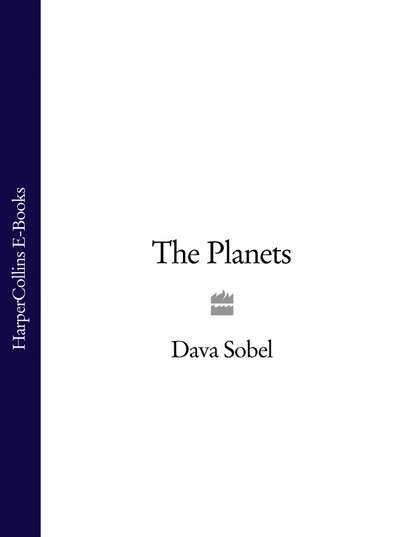По всем вопросам обращайтесь на: info@litportal.ru
(©) 2003-2024.
✖
The Planets
Автор
Год написания книги
2018
Настройки чтения
Размер шрифта
Высота строк
Поля
Bewitch the worlds.
C. S. Lewis, ‘The Planets’
If ever two worlds invited comparison, the twin sisters Earth and Venus lay such a claim, for these planets are almost identical in size, and orbit the Sun at similar distances. Early discoveries about Venus from afar – especially the detection of her atmosphere by Russian astronomer and poet Mikhail Lomonosov in 1761 – fanned widespread fantasies of a lush abode of Earth-like life.
Recent research, however, has exposed only the most glaring contrasts between the two planets. Although at an earlier epoch Venus probably possessed many of the same attributes as Earth, including once-abundant seas, her water has all boiled away. Now Venus parches and bakes under an obscuring sky that blocks light but traps heat, and bears down upon her surface with heavy pressure.
The ten Russian Venera and Vega spacecraft that successfully landed on Venus between 1970 and 1984 barely had time to take a few pictures and measurements, or quickly sample the surroundings, before succumbing to the harsh conditions. Within an hour or so of arrival, each vehicle either melted in the heat or crumpled under atmospheric pressure comparable to that found underwater on Earth, nearly three thousand feet below sea level.
Discoveries of the drastic differences between Earth and Venus evoked surprise sometimes expressed in moral terms, as though one sister had chosen the right course while the other veered down an errant path. Nevertheless Venus, the wayward sister, preaches an important cautionary tale to careless humans, for her hostile environment proves how even small atmospheric effects can conspire over time to convert an earthly paradise into a hellfire cauldron. Indeed, much current study of Venus aims to save humanity from itself by verifying, for example, the destruction that chlorine compounds wreak in high-altitude clouds.
And art thou, then, a world like ours,
Flung from the orb that whirled our own
A molten pebble from its zone?
How must the burning sands absorb
The fire-waves of the blazing orb,
Thy chain so short, thy path so near
Thy flame-defying creatures hear
The maelstroms of the photosphere!
Oliver Wendell Holmes, ‘The Flâneur’* (#litres_trial_promo)
Differences between Earth and Venus doubtless began in their youth, with the Sun beating hotter on the closer of the two sisters. The Sun warmed the waters of Venus until they rose in steam, until water vapour and the hot breath of volcanic eruptions enveloped the planet. These gases then did the work of greenhouse glass: they allowed the Sun’s heat to reach the surface of Venus, but refused to let heat escape. Instead of dissipating into space, the heat rebounded back down to ground level and made the surface hundreds of degrees hotter still.
High over Venus, Sunlight split the water vapour into its components, hydrogen and oxygen, and the lighter hydrogen escaped the planet’s hold. Oxygen remained behind; it recombined with the surface rocks on Venus, and with gases vented by volcanoes, to create an atmosphere consisting almost entirely (97 per cent) of carbon dioxide, the most efficient and pernicious of all greenhouse gases. Today, although only a trickle of solar energy penetrates Venus’s cloud cover and arrives at the surface, the greenhouse effect keeps temperatures above eight hundred degrees Fahrenheit all around the planet, day side and night side, even at the poles. Ice on Venus? Liquid water? Impossible, although traces of water vapour do lace the sky.
The abundant carbon dioxide weighs on Venus’s hot terrain with ninety times the pressure of Earth’s atmosphere. On and just above the surface, where the Russian robot explorers conducted their brief surveys, the Venusian air is thick but transparent, enabling the spacecraft’s cameras to see clear to the horizon in the dim available light. All the light was red. Since only the long red wavelengths of light survive the journey down through the cloud canopy, the landscape presents itself as a monochrome in the sepia tones of old photographs. When night takes even this low-level light away, the vista glows in the dark. Its red-hot rocks, cooked halfway to their melting point by the ambient heat and pressure, resemble the embers of a fire.
Some twenty miles above the surface, the clouds set in, in layers fifteen miles thick, admitting no breaks in their coverage. They bar the Sun from ever showing itself at all during the whole course of the long Venusian day. The planet turns so slowly that a single day takes what would be reckoned as two months on Earth just to get from Sunrise to Sunset. Diffuse signs of the Sun’s light spread slowly from horizon to horizon as the hours pass, but even the brightest hours of the day stay as dimly lit as vespertide. At night, no stars or other planets ever appear through the perpetual overcast.
Venusian clouds comprise large and small droplets of real vitriol – sulphuric acid along with caustic compounds of chlorine and fluorine. They precipitate a constant acid rain, called virga, that evaporates in Venus’s hot, arid air before it has a chance to strike the ground.
Scientists suspect that every several hundred million years the clouds may be remade by a fresh injection of sulphur from global tectonic upheaval on Venus, but failing that, they probably never part.
At their topmost layer, the Venusian clouds display dark swirls when imaged in ultraviolet light. These markings change rapidly, revealing the high velocity at which the clouds roll by – about 220 miles per hour – circling Venus every four Earth-days on fierce winds. Lower down in the atmosphere the winds slacken gradually until they reach the surface, where they don’t so much blow as creep across the planet at two to four miles an hour.
Fast or slow, the winds head ever westerly, the same way Venus turns. In contrast to all the other planets, Venus rotates to the west, even as she revolves eastward with them around the Sun. If you could see the Sun rise on Venus, it would come up in the west and set in the east. Astronomers attribute the backward spin to some violent collision that overturned Venus early in her history. The same presumed impact could explain Venus’s very slow rotation rate, or perhaps it is the Sun that impedes the planet’s spin by raising tides in the vast ocean of Venusian air.
Deep within that
libidinous albedo
temperatures are hot enough
to boil lead,
pressures
90 times more unyielding
than Earth’s.
And though layered cloud-decks
and haze strata
seem to breathe
like a giant bellows,
heaving and sighing
every 4 days,
the Venerean cocoon
is no cheery chrysalis
brewing a damselfly
or coaxing life
into a reticent grub,
but a sniffling atmosphere
40 miles thick
of sulphuric, hydrochloric,
and hydrofluoric acids
all sweating
like a global terrarium,
cutthroat, tart, and self-absorbed.
Diane Ackerman, ‘Venus’
After hiding for an eternity beneath her seething atmosphere, Venus’s surface has surrendered to radar examination by Earth-based telescopes and a series of orbiting spacecraft. The finest of these envoys, Magellan, circumnavigated Venus eight times a day for four years beginning in 1990.* (#litres_trial_promo)Magellan resolved the planet’s vague face into distinct features, most of which turned out to be volcanoes of every variety on plains paved with lava.







